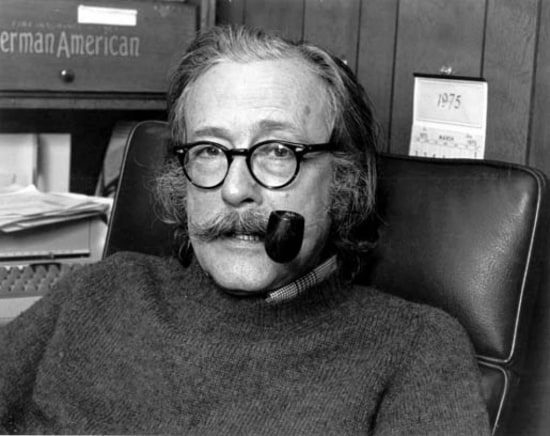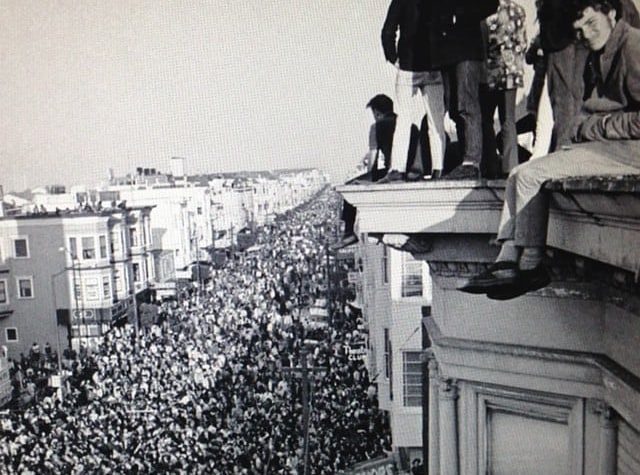Tom Donahue, Ralph Gleason, and Rolling Stone Magazine
Ralph J. Gleason (1917-1975;) one of the most influential jazz and pop music critics of all time. He was a central figure in the San Francisco rock scene, helped organize the Monterey Pop Festival, and co-founded Rolling Stone magazine. Bill Graham himself credited Gleason with suggesting the Fillmore Auditorium to him as a site for concerts, while the Family Dog met with Gleason at his home to discuss their idea to stage dance concerts, prior to their first show at the Longshoreman's Hall. Gleason obtained these posters at the Fillmore after shows, and took them home, storing them carefully in his archive.
Gleason was a contributing editor to Ramparts, a prominent leftist magazine based in San Francisco, but quit after editor Warren Hinckle criticized the city's growing hippie population. With Jann Wenner, another Ramparts staffer, Gleason founded the bi-weekly music magazine, Rolling Stone, in November 1967to which he contributed until his death in 1975.


Original Rolling Stone Magazine logo by Rick Griffin
Tom Donahue wrote a 1967 Rolling Stone article titled "AM Radio Is Dead and Its Rotting Corpse Is Stinking Up the Airwaves", which lambasted the Top Forty format. He subsequently took over programming for a foreign-language station, KMPX, and changed it into what was considered to be America's first alternative "free-form" radio station. The station played album tracks chosen by the DJs on the largely ignored FM band. This one move introduced progressive radio to the U.S. The presentation of music on the station stood in stark contrast to most other stations of the day. Instead of a hit music-dominated playlist, KMPX played more album cuts, local, emerging and cutting-edge artists, and a wide mix of genres such as rock, blues, jazz and folk music.
This change coincided with the greater emphasis on albums as opposed to singles in the rock market. Hugely popular albums such as The Beatles' Sgt. Pepper's Lonely Hearts Club Band did not contain any singles, so there was clearly a need for a radio format that would explore beyond the Top 40. This in turn led to rock artists placing greater emphasis on long or experimental album tracks, knowing they could still receive radio airplay.
Over time (some much faster than others), the large-city progressive rock stations usually lost DJ freedom and adopted the more structured and confined album-oriented rock format in the 1970s or 1980s, and then later the nostalgic classic rock format in the 1980s or 1990s, while the smaller stations sometimes turned to college rock or alternative rock.

Today's logo

